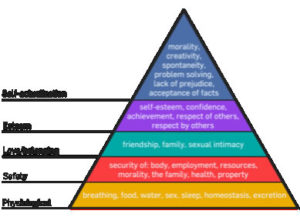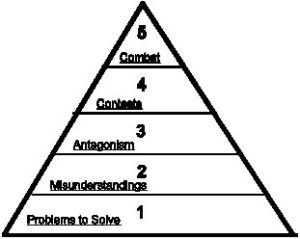The Coronavirus pandemic has multiplied both the the reality and the influence or force of anxiety in the lives of individuals. And at the same time there is increasing evidence that all segments of society (locally, regionally or nationally) are having difficulty coping with the anxiety of the ups and downs of the spikes in infections and deaths.
The most obvious places to observe stress intensifying anxiety are the hospital settings and in venues such as shopping centers, bars, restaurants, and places like picnic grounds or beaches. A popular mentor for thousands of leaders repeatedly reminded attendees at training events, “The explosive outbursts by individuals and small groups in your setting are their ‘dumping’ of individual or collective or pent-up anxiety onto you or into your system. Their seeming attacks on you or others in your organization ARE NOT ABOUT YOU. Often in their lives they have been disappointed or are having feelings of failure and need to dissipate or dispose of the sorrow for failing or self-pity because they think that either they flunked or someone cheated them or ignored them.”
So in the midst of a global pandemic, that is a horrible episode in the our national and global history, each of us is experiencing a new form and intensity of anxiety. This is due in part to the continual exposure to charts, graphs, predictions and the realities of sickness and death all around each of us. And there is the increasing frustration across all sociological and philosophical segments with a lack of consensus about what the “best practices” are for daily life.
Those that take seriously the risks of either catching the virus or transmitting it to others are distressed that some segments of our population either deny or diminish the illness.
The persons and groups that are determined to ignore or debunk medical information consider those complying with guidance and mandates to be ignorant or wimps.
The opposite views about major issues in daily functioning is not a new phenomenon. And the back & forth debates, arguments and other struggles will not disappear. Most of the time when such oppositional viewpoints are dispatched…there is not the risk of overselling or underselling becoming a life or death issue for a community or the global population. The Covid-19 pandemic is termed “novel” by medical experts. And those trained to equip leaders other than medically trained ones are enlightened about the affects and effects of anxiety. On the other hand, the intensity and multiplication of anxieties is unique. The same responses are needed; they are just needed in an exponentially increasing manner.
And YES…there is anxiety in the personal experience of those that WILL wear a mask and those that REFUSE to wear a mask.
The training about dealing with anxiety in a system is to be self-aware and self-defined. It is important not to try to have a meaningful conversation with someone who is screaming at you, or accusing you or threatening you.
Simply be aware that the confrontations and accusations ARE NOT as much about you as they are demonstrations of the need to displace or transfer the other person’s or persons’ inner turmoil in hope of achieving a sense of inner peace. Human history and in-depth research clearly report that the person or persons “dumping” DO NOT maintain the tranquility for an extended amount of time.
A peer in my realm shared with me a formula or plan for how to function when confronted by an individual or group with a need to “dump” or displace anxiety.
The strategy is to NEVER R. E. D.
Never REACT when there is a feeling of attack, distress, anger or demands for compliance. Rather, RESPOND with “I” statements: “I am uncomfortable with what I have just experienced.” Or, “I am requesting that we have a 5-10 ‘pause’ so that I can get myself calmed down. And I am requesting that you step out of this space; or I will exit for some time for each of us to take a deep breath.”
Never EXPLAIN when the other person is angry, belligerent, shouting, or trying to intimidate. An anxious, troubled or troubling person will seldom, if ever, be in a position to accept reason or an informed reply.
Never DEFEND when in a situation that is filled with negative emotions or high decibel declarations. Attempting to DEFEND will almost always be assessed as a counter-attack by the confrontational person/group. Defensive statements will only escalate the episode.
This is being written at the end of July 2020. And, at this time there continue to be increases in infections, hospitalizations, and deaths from Covid-19. Therefore, it is important to be aware that there will most likely continue to be an increase in the intensity of anxiety. This multiplication for individuals and across all of society requires not only extreme caution but also a need for self-defined and non-reactive people.
Be observant and take deep breaths of safe air and attempt to be a calming model for those around you.


 Most conflicted or turbulent situations first appear at Level 1. Almost all matters can be resolved that first appear in this stage of any issue or concept divergence. But the issues need to be addressed for what they are. Timid or testy people are prone to “misread” this stage of conflict and there is an escalation to Level 2.
Most conflicted or turbulent situations first appear at Level 1. Almost all matters can be resolved that first appear in this stage of any issue or concept divergence. But the issues need to be addressed for what they are. Timid or testy people are prone to “misread” this stage of conflict and there is an escalation to Level 2. Cyclone theory
Cyclone theory